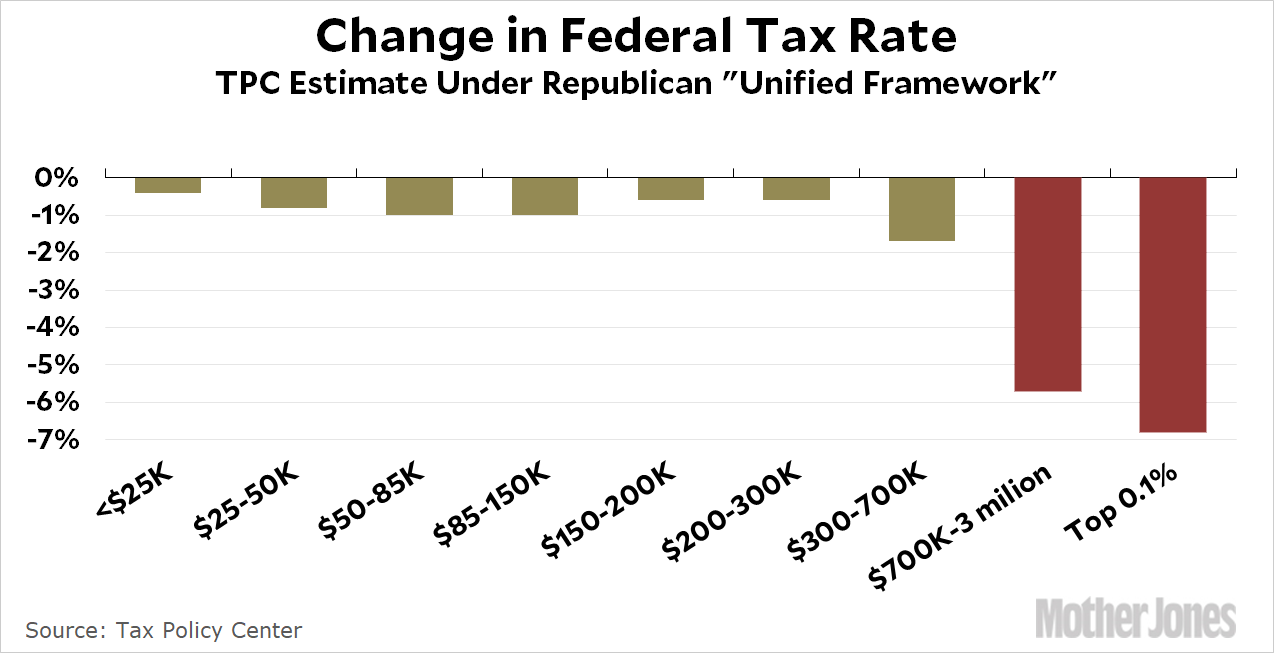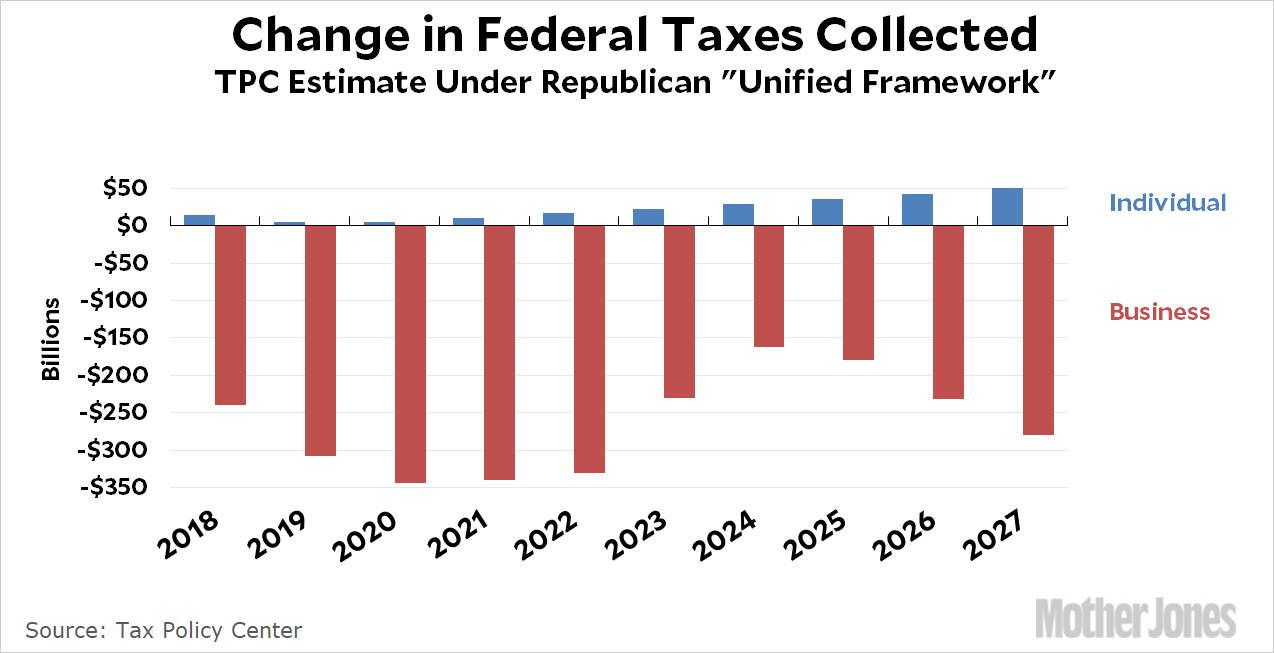The folks at the Tax Policy Center have released a preliminary analysis of the Republican tax cut plan, and it’s about what you’d expect:

The bottom line—tiny benefits for ordinary people, huge benefits for the rich—is pretty normal for Republican tax plans. What’s astonishing, I guess, is how far up the income scale you have to go before you leave the “ordinary person” category. If you make less than $300,000, you get a tiny pittance—less than a thousand dollars. Even folks who make $700,000 don’t get much: less than a 2 percentage point change, which works out to about $7,000.
To get any real benefit, you literally have to make a million dollars a year. That’s the point where the tax break really produces any benefit: a reduction of 6-7 percentage points, or $100,000+. Republicans just don’t care about anyone making less than that.
But here’s another chart. It’s kind of odd:

Once you factor in everything, including the elimination of the state tax exemption and the elimination of the estate tax, TPC estimates that the individual tax plan raises more money than the current tax structure. The deficit-busting stuff comes solely from the business tax side of things. This means that most of the benefit to the rich also comes from the change in business taxes.
I would really like to see a TPC estimate of just the individual tax changes. I suspect the distribution chart would look like a U. The elimination of the state tax deduction wouldn’t affect the poor and working class, who mostly just take the standard deduction. It would start to hit at upper middle class levels, and would probably make the tax plan a net negative for them. At the very top, it would cut a bit off the benefit, but the elimination of the estate tax would make up for it.
How about it, TPC? Can you do a microsimulation of the individual and business taxes separately? I’m genuinely curious to see who benefits most from each one.

















